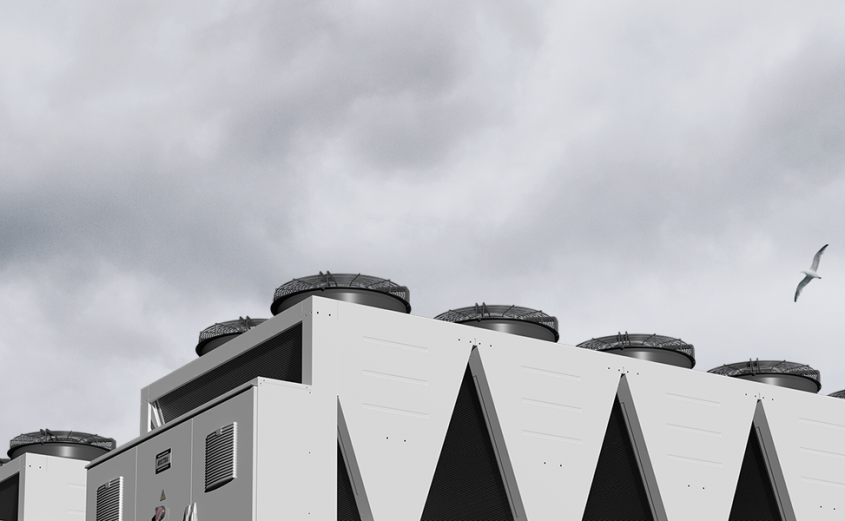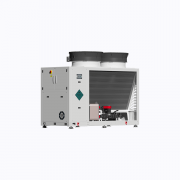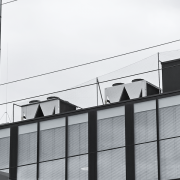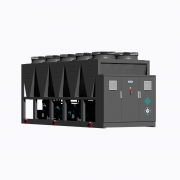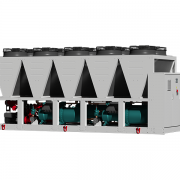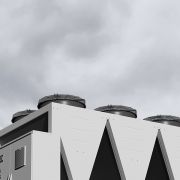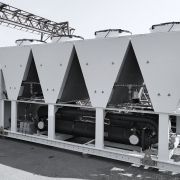Essential chiller maintenance checklist
Every chiller or chiller plant should be, for the most part, relatively self-reliant. Yet like all heavy machinery, regular preventive maintenance can improve performance, prevent breakdowns, and extend the service life of the equipment. Chillers should be inspected leastwise two times a year if they are only used during the cooling seasons and four times a year in case of continuous operation.
We recommend the following procedures to keep your chiller system at peak performance and avoid unexpected shutdowns and costly downtimes. The below checklist has been compiled to help chiller plant operators conduct detailed and reliable maintenance on air-cooled and water-cooled chillers.
Maintenance Checklist
Logging
Record operating conditions such as temperatures, flow rates, pressures, fluid levels of your system:
- Condensation pressure/temperature
- Evaporation pressure/temperature
- Water flow rate and inlet/outlet water temperatures
- Suction temperature, for all compressors in the system
- Discharge temperature, for all compressors
- Oil temperature and pressure, acidity and humidity
- Superheat and subcooling values
Record power supply parameters:
- Line voltage on each phase
- Absorbed current
Record environmental parameters:
- Ambient temperature
Keep accurate maintenance logs that help to narrow down any issues. Many chillers automatically save logs with ongoing measurements in their onboard control system.
Inspection Checklist
- Visual inspection. Assure all equipment is operating and that safety systems are in place
- Checking for leakages. Ensure the water and refrigeration pipeworks have no leakages, and there are no observed spills of refrigerant, oil, or water
- Detect the sources of abnormal vibrations and unusual sounds, if any
Prior to performing the next maintenance tasks, a serviced chiller must be disconnected from the electrical power supply.
- Check fixings and fastenings, tighten when necessary
- Check the chiller components for corrosion. Pay special attention to pipework and electrical connections
- Cooling/condenser coils must be inspected for fin distortion and traces of corrosion or leaks and replaced if necessary
- Inspection of the condenser fans should be carried out with emphasis on bearings check for signs of wear
- Check insulation for damages
- Assess chiller components fouling:
- For condenser coils and fan assemblies (for air-cooled chillers)
- For evaporator – especially important for systems like water-cooled chillers with heat rejection by open-circuit cooling towers where water may be contaminated
- Look up for non-condensables: it is vitally important to purge air and moisture from the refrigeration circuit. Non-condensables may significantly affect chiller performance and efficiency
- For electrical components and cabling
- Check all motor voltages & amps, electrical starters, contactors, relays, and inspect unit grounding
- Check electrical connections and terminals for contact and tightness
- Check electrical wiring
- Check low-voltage circuits, transformer voltage, sensors accurate readings
- Check compressors. Check compressor alignments to specification
- Check operation of safety devices
- Check oil levels and oil filters
- Check suction filter
- Inspect valves and valve actuators’ mechanisms
- Check pressure vessels, if any
- Check strainers
- Check if the replacement of consumables is required:
- Process water and glycol. Water quality is critical as failure to manage it will cause water pipework to corrode, which will inevitably lead to chiller failure. Check the water treatment quality of the chilled-water circuit. Check glycol condition and concentration to avoid system freezing under low-ambient conditions
- Refrigerant. Check the refrigerant level and condition using sight-glasses and compare superheat and subcooling temperature readings to the manufacturer’s requirements to detect if the current refrigerant charge is correct. Add refrigerant when necessary
- Lubricant oil. Conduct analysis on oil and check if oil shall be replaced due to contamination or added if its level is too low
Maintenance Works
As inspection works are completed, an action plan will depend on the outcome of performed checks. Compare ongoing operating parameters with the initial system setup. Read manufacturer instruction on servicing and maintenance procedures and execute tasks in strict accordance with it. For all works that cannot be performed on-site or should be undertaken by competent and trained personnel, it is necessary to hire qualified technicians or apply for appropriate maintenance contracts offered by the equipment manufacturer. Kaltra offers tiered maintenance contracts differentiated by the scope of works and maintenance frequency, including all-inclusive contracts with spare parts and consumables included in the cost. After finishing the maintenance list, the chiller is ready to be put back into service.
Using this maintenance checklist, you can maintain optimum performance out of your chiller, prevent unplanned shutdowns, and ensure longer operating life of the cooling system.

